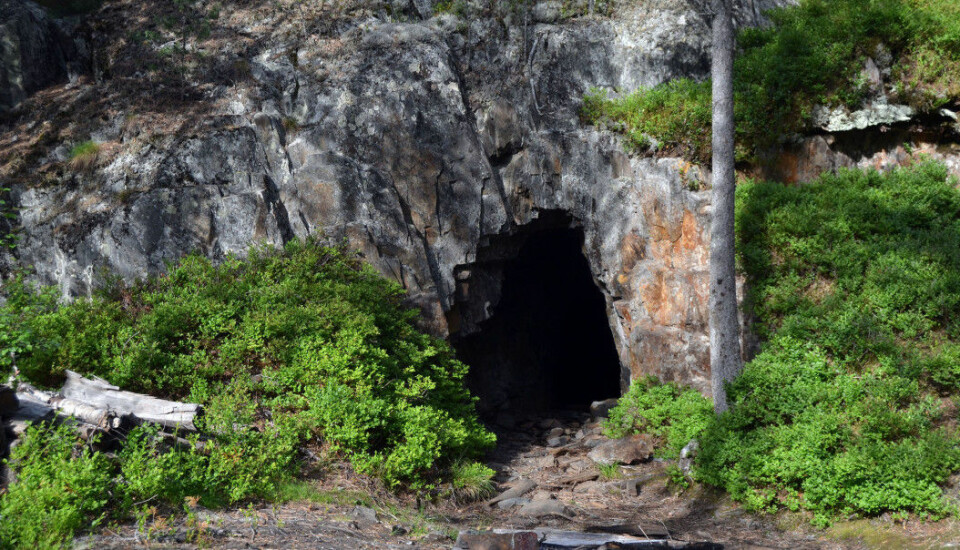
The Kongsberg mines are famous for their beautiful native silver. Researcher now claims they may also be full of gold.
In the 1600s, promising gold discoveries were made in Kongsberg's silver mines. Now a researcher has looked into the gold finds from 350 years ago.
Kåre Kullerud is the geological conservator at the Norwegian Mining Museum in Kongsberg.
He has examined several old ore lumps at the museum in Kongsberg. He has also studied ore from Kongsberg that is stored in the Natural History Museum in Oslo and at the Swedish Museum of Natural History in Stockholm.
“I think there may be a lot of gold that hasn’t been discovered in the bedrock around Kongsberg,” Kullerud tells ScienceNorway.
Profitable gold mining?
The researcher at Kongsberg has also reviewed several hundred-year-old reports that are stored in the archives at the Mining Museum. He’s found numerous indications of gold finds here, too.
“I don’t think there’s much chance of finding any gold deposits near the surface. But if someone does some systematic drilling, then they might hit gold,” Kullerud says .
Whether it would be enough to start a profitable gold mining operation is always uncertain, he emphasizes.
Gold mine with limited gold
Already in 1630 – only a few years after the first silver mine opened in Kongsberg in 1623 – gold was discovered in the Braunschweig mine.
The gold finds were considered so promising that a lot of money was invested in the gold mine Beständige Liebe later in the 1600s. It is located in the Svartås area about three kilometres from Kongsberg’s city centre.
The mine was excavated down to a depth of 70 meters. But the gold that was found was only enough to make a few gold coins.
The enterprise turned into an economic scandal in the 17th century. And that was the end of all further gold exploration in Kongsberg.

Maybe more down there?
“But I’m still convinced that there’s more gold in the Kongsberg mountain,” says Kullerud.
He tells us that this wouldn’t be pure gold, but a natural alloy of gold and silver called electrum.
Ancient Greeks called electrum "white gold" – as opposed to "refined gold." In Egypt, electrum was used as early as 5000 years ago, including for death masks on mummies.
The amount of gold in the electrum from Kongsberg varies from 20 per cent to 80 per cent, says Kullerud.
“A lot of the gold in the world is found as electrum, that is, as a mixture of gold and silver. If the electrum contains more than 20 per cent gold, it will have a clear gold colour. If the gold content is less, electrum can be mistaken for pure silver,” he says.
Kullerud has almost finished preparing his manuscript for a scientific article on the gold finds at Kongsberg. He had actually intended to wait to talk about it until after the article was published, but has now shared his discovery with ScienceNorway.
Gold formed before silver
Kullerud has also determined that the silver and gold at Kongsberg underwent very different geological processes in their formation.
He notes that the gold samples are completely different from the typical silver samples.
“I conclude that distinctly different ore-forming processes must be the reason. The gold was formed during geological processes that took place before the processes that led to the silver being formed at Kongsberg,” Kullerud says.
1350 tonnes of silver extracted
Silver was extracted from the mines in Kongsberg for more than 300 years, until being closed down in 1958.
A total of 1350 tonnes of silver were mined from 130 large and small mines around the city in Buskerud county.
Some research was done on the mineral deposits in Kongsberg while the mines were still in production. But little was published following World War II.
In recent years, amateur geologists and mineral collectors have been the main groups to show interest in the Kongsberg mines.
Native silver from Kongsberg
Today the Kongsberg mines are world famous for their beautiful native silver.
Native silver is found in many silver mines in the world. But experts often point to the silver from Kongsberg as the most beautiful.
Nature shaped the threadlike silver formations. No silversmiths have embellished them.
The native silver from Kongsberg can be seen in natural history museums all over the world. The Norwegian Mining Museum in Kongsberg houses the world's largest collection.

Sources:
Geoforskning.no (in Norwegian)
Norwegian Mining Museum’s website
Wikipedia article about the silver mines at Kongsberg and electrum
Jana Kotková, Kåre Kullerud et al: The Kongsberg silver deposits, Norway: Ag-Hg-Sb mineralization and constraints for the formation of the deposits, Mineralium Deposita, 2017.
———































